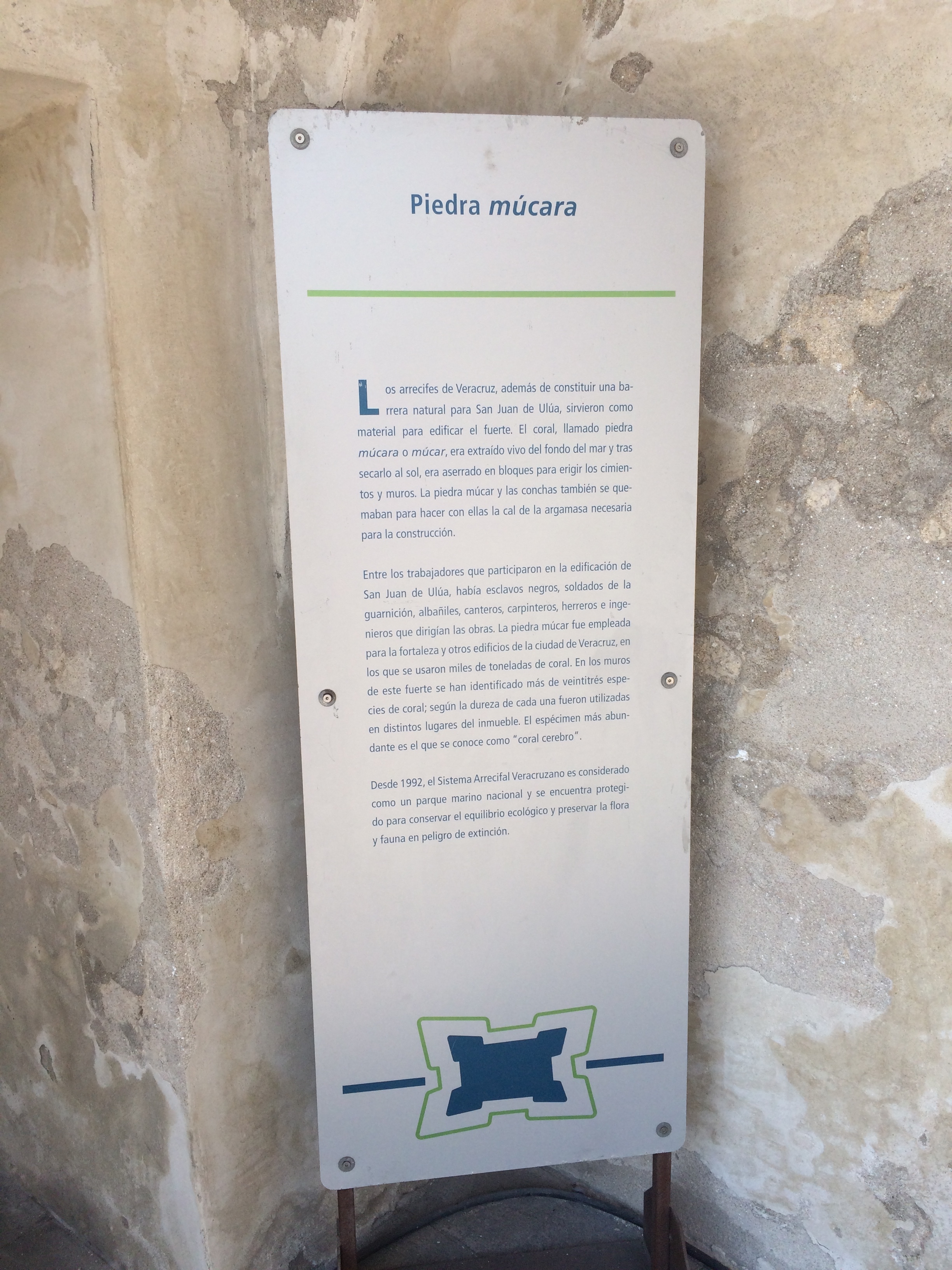Photograph as originally submitted to
this page in the Historical Marker Database
www.HMdb.org.
Click on photo to resize in browser. Scroll down to see metadata.
Photographer: J. Makali Bruton
Taken: March 23, 2017
Caption:
An additional marker on the coral stone used in the fort's construction | Additional Description: This marker is on the northern side of the large plaza in front of the Governor's House. It reads:
Piedra múcaraLos arrecifes de Veracruz, además de constituir una barrera natural para San Juan de Ulúa, sirvieron como material para edificar el fuerte. El coral, llamado piedra
múcara o
múcar, era extraído vivo del fondo del mar y tras
secarlo al sol, era aserrado en bloques para erigir los cimientos y muros. La piedra múcar y las conchas también se quemaban para hacer con ellas la cal de la argamasa necesaria para la construcción.
Entre los trabajadores que participaron en la edificación de San Juan de Ulúa, había esclavos negros, soldados de la guarnición, albañiles, canteros, carpinteros, herreros e ingenieros que dirigían las obras. La piedra múcar fue empleada para la fortaleza y otros edificios de la ciudad de Veracruz, en los que se usaron miles de toneladas de coral. En los muros de este fuerte se han identificado más de veintitrés especies de coral; según la dureza de cada una fueron utilizadas en distintos lugares del inmueble. El espécimen más abundante es el que se conoce como "coral cerebro".
Desde 1992, el Sistema Arrecifal Veracruzano es considerado como un parque marino nacional y se encuentra protegido para conservar el equilibrio
ecológico y preservar la flora y fauna en peligro de extinción.
English translation:Múcara or Coral StoneThe reefs of Veracruz, besides constituting a natural barrier for San Juan de Ulúa, served as material to build the fort. The coral, known in Spanish as
múcara or
mucar, was extracted alive from the bottom of the sea and after drying in the sun, was sawn into blocks to use in the foundations and walls.
Among the workers who took part in the construction of San Juan de Ulúa, there were slaves, soldiers of the garrison, masons, carpenters, blacksmiths and also engineers who directed the works. The stone was used for the fort and other buildings in the city of Veracruz, where thousands of tons of coral were used. In the walls of this fort more than twenty three species of coral have been identified. According to the hardness of each type of coral they were used in different places in the construction. The most abundant species used is what is known as "brain coral".
Since 1992, the Veracruz Reef System is considered a national marine park and is protected to preserve the local ecology and to preserve the flora and fauna in danger of extinction here.
Submitted: June 12, 2017, by J. Makali Bruton of Accra, Ghana.
Database Locator Identification Number: p385330
File Size: 2.187 Megabytes
To see the metadata that may be embedded in this photo, sign in and then return to this page.
